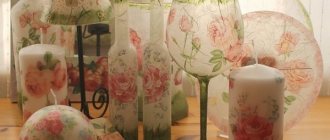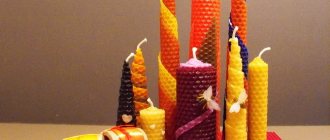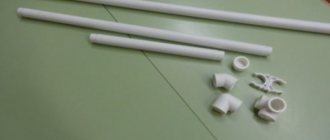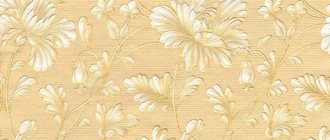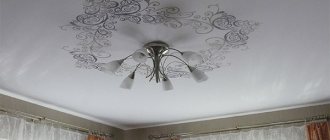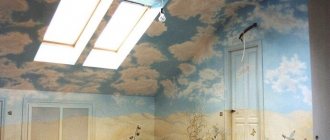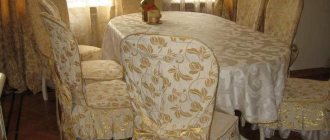Round version with handle
This master class will allow novice craftsmen to master this fascinating technique of weaving baskets from newspapers, and will also tell you which materials to use and which to avoid.
Required equipment:
- newspaper;
- PVA glue;
- thin knitting needle;
- scissors and stationery knife;
- stain, always alcohol-based;
- dye;
- varnish;
- brushes for applying glue and paint;
- base frame.
Step-by-step operating instructions. Determining the direction of paper grain.
For the best result, the direction should be longitudinal, which will not show itself in any way if you stretch the sheet between the nails of two fingers.
The newspaper sheet is measured in strips 7 cm wide, after which it is cut into even shreds using a stationery knife. For the product described in this article, 30 flagella 50 cm long are enough. Before you start twisting the shreds into bundles, you must position the knitting needle at an angle of up to 15°.
Even at the beginning of twisting, it is necessary to tighten the paper tightly on the knitting needle. At the end, the edge of the paper is fixed with glue. The finished tubes are painted with the required color and left until completely dry.
Read this: Paper sailboat: building a real origami ship
The bottom is the basis of the work. To complete this part, take 10 tubes and lay them out in pairs.
Take another tube, fold it into two equal parts and wrap it around the first pair of tubes.
All pairs of tubes are braided with a working tube. When it ends, the next tube is inserted into the inside of the end of the ended tube. The working flagella cross, after which the first passes from above the pair of tubes, the second from below.
The third and fourth rows begin to weave into one flagellum.
The direction of the working flagella is the middle of the bottom.
A bottom edge is formed. The first tube bends around the next tube, directing it to the central part of the bottom. The repetition occurs in a circle.
The last flagellum is directed into the node of the first tube from below.
When the bottom is ready, work begins on the walls of the basket. Each tube is braided with a flagellum with a slight inclination from the center. This action is performed in 4 rows.
To add zest to the work, wooden beads with a diameter of at least 15 cm are put on the strands.
For rows 6 and 7, the same stitch applied to the first rows is used.
The excess length of the working flagella is removed, and the rest are threaded with a knitting needle for inter-row knitting.
The tips of the removed working flagella are trimmed with scissors.
Read this: Candy basket: a master class on making a product from corrugated paper
On the sides where the beads are located, you should leave three working tubes, which are secured with clothespins. Having smeared the tubes with glue, new knitting and fastening of the handles with working flagella begins.
For decoration, paint, tint, and stain are used. To create flowers or other still lifes, you can use thin napkins with patterns. Such napkins are cut out, fixed and varnished along with the entire surface of the basket. That's all the instructions for beginners. Now you can enjoy your work.
If you paint the picture in a different color scheme and use other napkin textures, for example, church crosses or Christian symbols, you can get a wonderful basket for Easter eggs.
Staining the tubes
You can easily paint a basket made from newspaper tubes with your own hands. You can paint both the finished product and paper blanks.
It is better to dilute it with a small amount of water and apply with a brush. Then they paint with acrylic paint or stain in several layers for an even shade. If desired, you can add different dyes or colors - paste. To get an even tone, you must first coat it with any product that has a coloring pigment: brilliant green, iodine, food coloring, gouache, tonic.
We invite you to familiarize yourself with the Lunar calendar in Karelia
It is better to paint newspaper blanks before starting work, since unpainted gaps will not be visible. A special fabric dye, water-based acrylic polymers, stain and food coloring agents are used. The stain is suitable for painting white tubes; they look like natural vines. The main shades are oak, coffee, mahogany and walnut.
To paint long workpieces, you need to make a device from a piece of large-diameter polypropylene pipe.
Both ends must be cut off and a plug (plastic jar) glued to one of them with PVA glue, which will prevent liquid from leaking out.
Then you need to pour the coloring agent into the pipe, not reaching the top a little, and place it on a special stand.
Next, you need to take several tubes and lower them into the solution. After impregnation, they should be pulled out and immersed in the coloring liquid with the other side. During the dyeing process, it is advisable to add emulsion to the container for good dyeing of the source material. At the end, all the workpieces are laid out on a level place and dried in the shade in the air.
Short strands are painted in a bottle with a spacious neck. It is necessary not to completely fill the container with dye. Then lower several tubes there and shake them for uniform painting, then turn them over and repeat the maneuver. Place on a smooth surface, dry and paint a second time to achieve a rich color.
To prevent the workpieces from becoming wrinkled, you should lay a piece of thick paper around the circumference of the bottle or pipe.
Square basket
The square basket is a universal product. It is suitable for fruits, storing yarn and even carrying flowers.
Required equipment:
- newspaper;
- PVA glue;
- thin knitting needle;
- scissors and stationery knife;
- cardboard;
- dye;
- hole puncher.
Work process:
- A wide strip is cut out of cardboard, which is slightly longer than the width of the basket being created. The flap is folded in half and holes are punched with a hole punch at intervals of 16-21 mm. Tubes from newspapers are inserted into the holes;
- A second tube is taken to lengthen the first one. The process of braiding a rope next to the cardboard begins. Weaving is carried out in rotating rows, lengthening the working tube if necessary;
Read this: DIY paper daisy using simple techniques
- To weave the walls of the basket, tubes are drawn into the weave, bending in the middle. All the resulting tubes are bent upward;
- For ease of weaving, you can use a base around which the weaving will be done;
- The elongated tube begins to braid the base tubes in a circle, including the end of the added tube. The circular weaving continues. The work must be done smoothly;
- To create a basket handle, you should leave four working tubes, which are secured with clothespins;
- The excess length of the working flagella is removed, and the rest are threaded with a knitting needle for inter-row knitting;
- Having smeared the tubes with glue, new knitting and fastening of the handles with working flagella begins.
The square bottom basket is finished!
Methods of weaving from newspaper tubes
A do-it-yourself basket from newspaper tubes can be woven in two ways: solid and openwork.
In addition, there are different types of weaving, the main ones of which are:
- Simple weaving. Consists of making a frame of rigid paper tubes.
First, the narrow tip of the workpiece is fixed to one of the twigs of the frame and braided with a newspaper vine through one around the remaining parts of the frame at the back and front. You can use several lines and alternate twisting through 1-3 warp rods. - Layer weaving. Allows you to create a dense and reliable craft. It is necessary to wrap the cord around the first four supports and leave it sticking out to the side. Place another rope near the last braided post and braid the next 4 parts of the frame with it. It is necessary to add new tubes until the place where the wrapping began is reached.
- Openwork weaving. The technique is selected based on the intended pattern: columns, diamonds, stars. Most often, this type of twisting serves as a decoration for other types of work, forming carved holes.
- Rope weaving (spiral). The principle is to wrap the vines not only around the supports, but also to intertwine them with each other. For a simple design, you need to take two tubes and braid the first post at the back, and the second at the front. The next support should be done in reverse, and the third one the same as the first. Then alternate in the same sequence.
cat house
Using newspaper flagella, you can create not only baskets for carrying accessories or storing valuables, but also for housing your pet - a cat.
For cats, such a place will be incredibly convenient, since they are always hiding in places that seem dark, cramped and remote. But this device is not at all dark, but it is comfortable, warm and accessible. Your pet will love this product at first sight.
The video in the thematic video collection section will help you learn how to create such an irreplaceable creation step by step.
Edge decoration
Paper twine basket
Having mastered the basics of weaving, you can experiment and learn new weaving methods and various auxiliary materials. For example, braiding or using the effect of vertical voids, with which the basket looks more airy. Subsequently, satin ribbons can be woven into these holes and bows can be tied.
Painting boxes with acrylic paint
Tinting paper tubes to match the color of natural vine
When the basket is the desired height, it is advisable to hide the ends of the tubes that form the frame, secure and hide the workpiece. To do this you will need an extended knitting needle. It should be threaded through the hole near the stand in the middle for 3 rows. Repeat the same action in the other direction, then throw the stand over it and thread it down.
This will ensure that all the posts can bend. After finishing the work, you can get the finished edge. Lubricate the places where the racks hit with glue and let dry, then cut off all the excess ends of the workpieces. Carefully hide the sections among newspaper strips.
